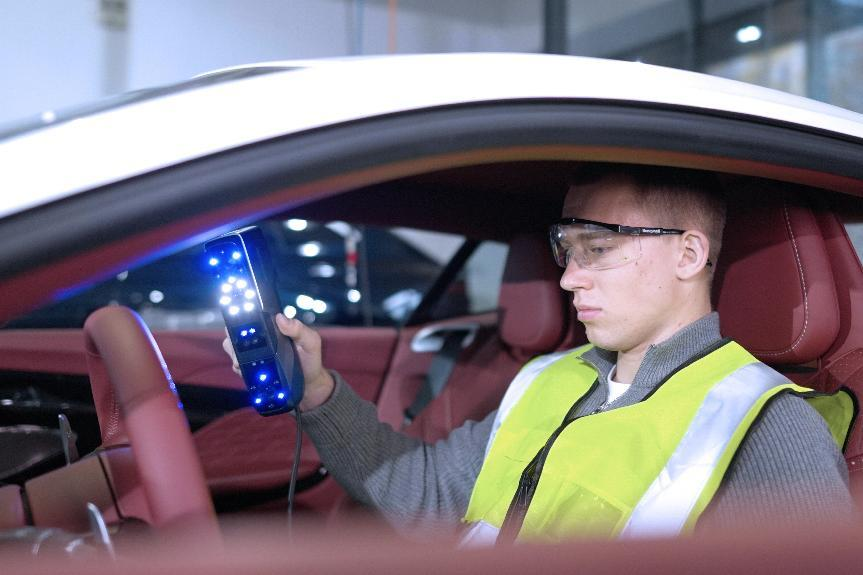Assessing the Precision: What Level of Accuracy Can You Expect from a Handheld 3D Scanner?
02/13/25
From product design to the preservation of cultural heritage, handheld 3D scanners have become increasingly popular in recent years. However, the degree of precision that these gadgets can offer is one of the most important factors to take into account while using them. Accuracy in 3D scanning can be influenced by several factors, including the technology used, environmental conditions, and user proficiency. As you explore the capabilities of handheld 3D scanners, it’s essential to understand what variances in accuracy to expect and how these tools can serve your specific needs. Whether you’re capturing intricate details for prototyping or scanning larger objects for analysis, knowing the limits and possibilities of these devices will help you make informed decisions and achieve the best results. So, let’s delve into the key elements that influence the accuracy of handheld 3D scanners and discover what you can realistically anticipate from their performance.

The Precision of Handheld 3D Scanners
Accuracy is one of the most critical factors when evaluating any handheld 3D scanner. Our state-of-the-art handheld 3D scanner, specifically designed by 3DeVOK, features impressive accuracy levels that can reach as high as 0.1 mm under optimal conditions. This degree of precision makes our infrared 3D scanner ideal for capturing detailed features of various objects, from intricate industrial parts to artistic sculptures.
The accuracy of a handheld 3D scanner can be influenced by several factors, including the scanning environment, the material being scanned, and the scanner’s software capabilities. Our infrared 3D scanner is equipped with cutting-edge imaging technology that minimizes errors caused by external factors. By utilizing infrared light, we enhance the device’s capability to scan surfaces without requiring additional preparations like powders or sprays, which can often compromise the quality of the data captured.
Moreover, our handheld 3D scanner’s built-in calibration mechanisms ensure that users can achieve consistent accuracy across multiple scanning sessions. This reliability is crucial for businesses involved in product development and manufacturing, where precise measurements are essential for successful outcomes.
Key Features Enhancing Accuracy
In addition to its inherent precision, our handheld 3D scanner comes equipped with several features that contribute to its overall accuracy. One standout aspect is its advanced tracking system, which allows for real-time adjustments during the scanning process. This ensures that even when scanning complex geometries or moving objects, the integrity of the 3D data remains intact.
Another significant advantage of our infrared 3D scanner is its ability to adapt to different materials and colors. Traditional scanners often struggle with black or glossy surfaces, which can absorb visible light and lead to inaccurate readings. However, our infrared technology excels in this area, allowing for effective scanning of varied materials without any additional preparation. This adaptability significantly enhances the usability of our handheld 3D scanner in real-world applications.
Furthermore, the high scanning speed-up to 60 frames per second-allows for quick data acquisition without sacrificing quality. This combination of fast processing and high accuracy lets engineers and designers gather the necessary information efficiently, facilitating a smoother workflow in product development or prototyping.
Real-World Applications and Industries
Understanding the accuracy of handheld 3D scanners is essential for recognizing their potential applications across various industries. For instance, in the automotive sector, our infrared 3D scanner can capture the precise dimensions of car parts, aiding in quality assurance and reverse engineering efforts. Engineers can rely on the accuracy of our handheld 3D scanner to ensure all components meet stringent specifications.
In the fields of architecture and construction, the ability to produce accurate models quickly enables architects and project managers to create detailed visualizations. With our handheld 3D scanner, users can effortlessly scan existing structures to document their conditions or to rethink designs. The availability of reliable models significantly improves collaboration between teams and stakeholders, ultimately leading to better project outcomes.
Additionally, our infrared 3D scanner is invaluable in cultural heritage preservation. Museums and artists can utilize our technology to create digital replicas of fragile artifacts, ensuring their protection while allowing for wider access through virtual exhibitions. The accurate representation provided by our handheld 3D scanner helps maintain the integrity of the original artworks and artifacts.
Conclusion
It is impossible to overestimate the significance of precise data collection in the fast-paced, technologically advanced world of today. We at 3DeVOK are dedicated to offering handheld 3D scanners that provide outstanding accuracy, versatility, and efficiency so that professionals in a range of sectors can confidently accomplish their objectives. In addition to satisfying the exacting specifications of engineering, architecture, and cultural preservation, our infrared 3D scanner gives users the ability to optimise workflows and boost productivity.
Related Articles
View Our Product




